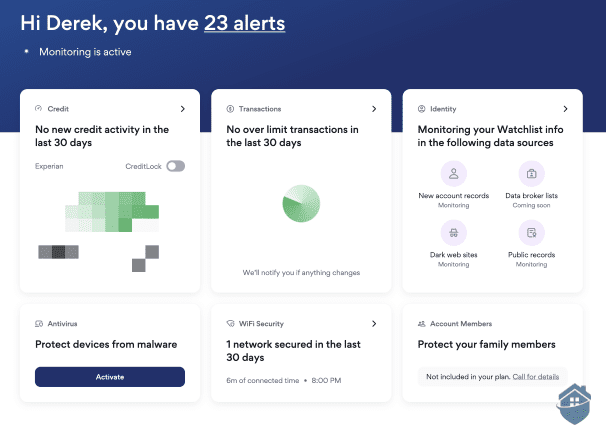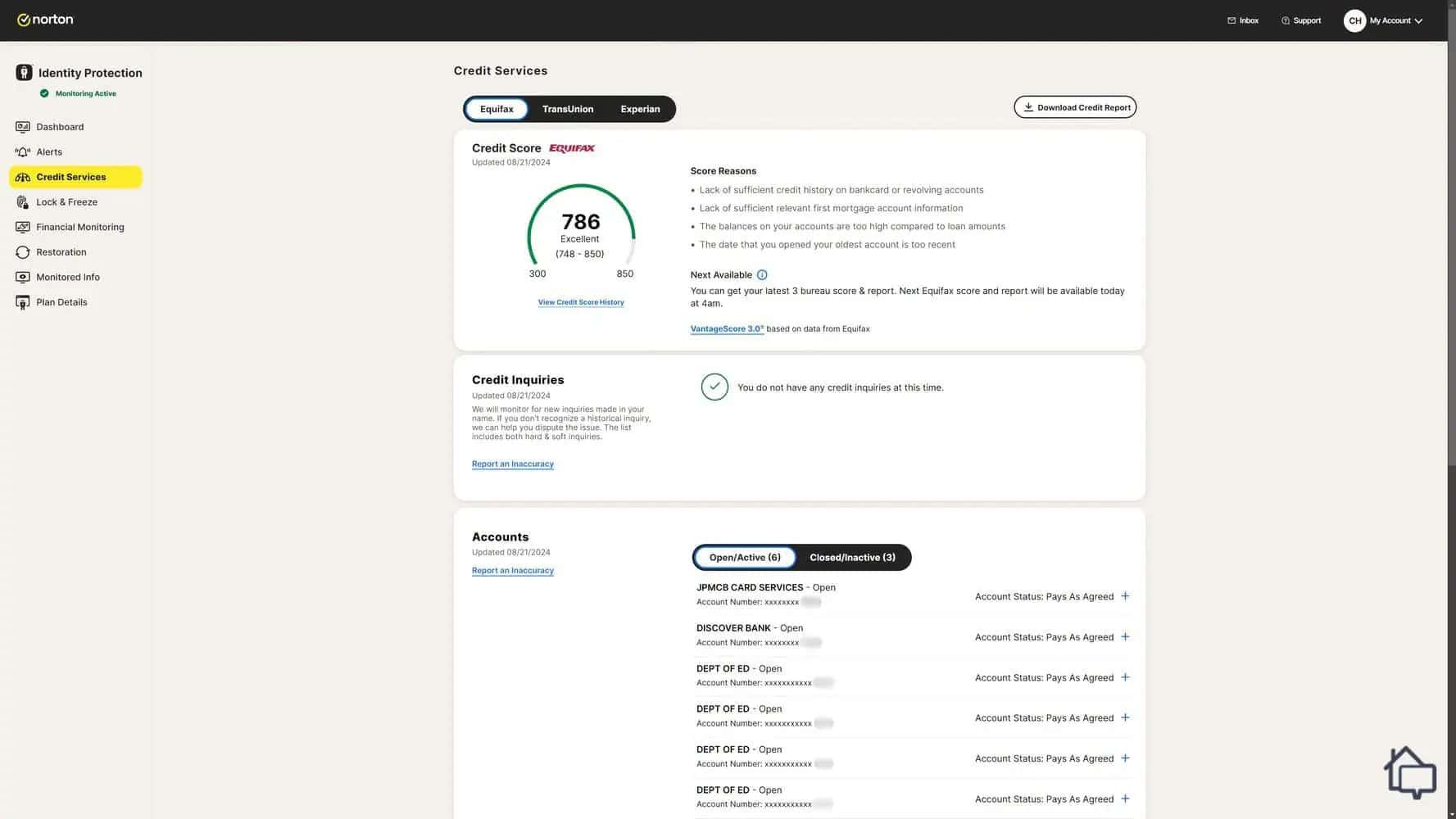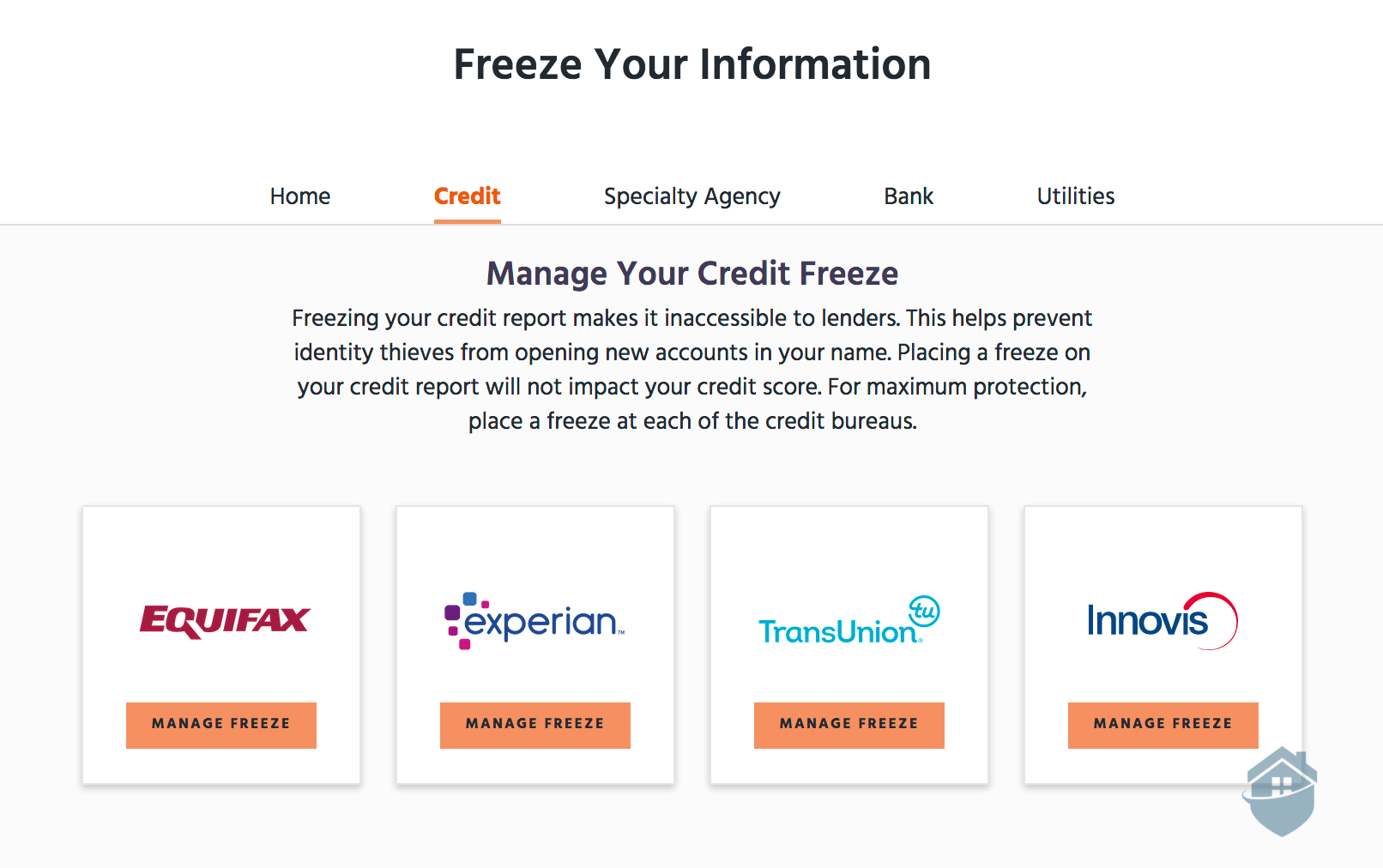In 2024, there were 3,158 reported cases of data breaches in the U.S. alone. These breaches affected 1.35 billion individual records in total.1 For us average people, those statistics reflect a threat to financial security and personal privacy.
Identity theft protection insurance is one solution. It helps victims recover losses from identity theft and data breaches. But having tested several services with this type of coverage, we know they’re not all equal.
Most providers say they cover up to $1 million or more, but there’s more to the story. What exactly do they cover? What are the limitations? Are the premiums worth the benefits? We’ll answer all those in this comprehensive identity theft insurance guide.

Our Aura dashboard displays everything it monitors and includes a designated area for claims.
What Is Identity Theft Insurance?
Identity theft insurance is specialized coverage that helps victims recover from identity theft and related crimes. It doesn’t prevent losses, but it focuses on reclaiming your stolen identity, fixing reputational damages, and reimbursing expenses, stolen funds, and legal fees.
The coverage typically includes two main components:
- Expense reimbursement
- Restoration services
Expense reimbursement covers out-of-pocket costs like notary fees, attorney fees, certified mail, phone bills, and lost wages during recovery. It also covers stolen funds in the case of financial identity theft.
On the other hand, restoration services provide professional case workers. Reclaiming your identity after an identity theft incident is a complex process. A dedicated case manager can help you through it.
Types of Identity Theft Coverage
The best identity theft protection services offer coverage for different types of identity theft. Each of these types can have varying financial, reputational, and legal impact, so it’s important to check which types of identity theft is covered by your insurance.
Here are a few examples:
Financial Identity Theft
Financial identity theft involves using your personal information to open credit accounts, make purchases, or access existing financial accounts. This type of identity theft can cause serious legal and financial damages.
Insurance coverage for financial identity theft typically includes reimbursement for fraudulent charges not covered by credit card companies, legal fees, and costs associated with credit monitoring and restoration.
For example, if someone opens three credit cards in your name and makes $15,000 in purchases, your insurance would help cover the costs of disputing these accounts, obtaining credit reports, and any legal fees. Plus, the fraudulent debt itself would be removed through the dispute process.

Norton LifeLock has a dedicated page for credit and financial monitoring.
Medical Identity Theft
When criminals use your insurance information to receive medical care or fill in prescriptions, it creates complex challenges beyond financial fraud. For instance, false medical information can be added to your health records, potentially affecting future care.
Specialized insurance coverage for medical identity theft helps correct medical records and resolve insurance claim disputes.
Tax Identity Theft
Tax identity theft is when criminals claim tax refunds in your name using your Social Security Number. This can affect both individuals and businesses. Recovering from this type of identity theft can be painstakingly slow. It often takes up to 12 months, making restoration services particularly valuable for this type of fraud.
Did You Know? In 2024 alone, the IRS recovered over $9.1 billion in fraud from tax crimes, which includes identity theft refunds.2
Criminal Identity Theft
This occurs when someone uses your identity during an arrest or court proceeding. This is less common, but the damage can be severe. Beyond reputational damage, you will need to go through long legal processes to clear your name, which can be expensive and overwhelming.
With identity theft insurance, however, you can reimburse legal fees and get help from your case manager on how to navigate the complex legal procedure.
How Identity Theft Insurance Works
Much like getting insurance for your car or home, you’d want to know how identity theft insurance works before getting one. You have to be clear on the claims process, coverage limits and deductibles, and exclusions and limitations of coverage.
The Claims Process
When identity theft occurs, the claims process often begins with filing a police report and contacting your insurance provider. Professional restoration services then take over much of the recovery work. They will advise you on what’s next, or even do the legwork for you. For instance, in cases of financial fraud, case workers can contact creditors, dispute fraudulent accounts, and coordinate with credit bureaus.
Expert Tip: Most insurers require documentation of the theft, including copies of fraudulent accounts, credit reports, and correspondence with creditors. Some identity theft protection services, like Identity Guard, include white glove remediation to help you navigate this process.
Coverage Limits and Deductibles
Most policies offer coverage limits between $10,000 and $1 million for expenses. However, actual out-of-pocket costs for identity theft victims typically range from $200 to $1,500. Many policies have no deductible for restoration services, though expense reimbursement may include small deductibles and limits.
One example of coverage limit applies to lost wage reimbursement. When testing identity theft protection services, we saw most of them impose a limit on how much you can reimburse in a specific time period. They may also set a limit on the number of days or weeks of absences they’d reimburse you for. For instance, insurance may reimburse up to $1,000 per week for a maximum of two weeks.
Exclusions and Limitations
Identity theft insurance policies may also impose strict exclusions and limitations. Common exclusions include theft by family members, business-related identity theft, and pre-existing fraud. Some policies also exclude certain types of expenses or limit coverage for reimbursement of stolen funds and legal fees. We recommend reading the policy details carefully to understand what’s actually covered.
Expert Tip: Be sure to document everything related to identity theft, including time spent on phone calls and copies of all correspondence. This documentation is crucial for expense reimbursement claims.
>> Learn More: Storing Important Documents
What Identity Theft Insurance Covers
Before signing up for identity theft protection services, we recommend reviewing what is actually included in the plans.
Covered Expenses
The best place to start is understanding what expenses are covered. Here’s a brief overview of typical coverage.
| Expense Type | Typical Coverage | Real-World Example |
|---|---|---|
| Lost wages | Up to $500-$1,000 per week | Time off work to resolve fraud |
| Legal fees | $5,000-$15,000 | Attorney costs for complex cases |
| Notary and documentation | Unlimited reasonable costs | Affidavits and certified mail |
| Credit monitoring | 1-3 years | Professional monitoring services |
| Phone and communication | Reasonable costs | Long-distance calls to creditor |
Restoration Services
Also keep in mind that identity theft protection service case workers typically handle:
- Contacting creditors and financial institutions
- Filing disputes with credit bureaus
- Coordinating with law enforcement
- Providing step-by-step guidance through recovery
- Monitoring progress until resolution
>> Learn More: The Best Identity Theft Restoration Services
What’s Not Covered
Identity theft insurance doesn’t cover the fraudulent debt itself. That’s removed through the dispute process. It also typically excludes:
- Theft of physical items (covered by homeowners insurance)
- Investment losses due to fraud
- Punitive damages
- Theft by someone with authorized access to your accounts
Costs and Pricing
Most identity theft protection services offer monthly subscriptions that include the premium for the identity theft insurance policy. However, there are some other costs you should be aware of.
Standalone Policies
Independent identity theft insurance typically costs $120 to $300 annually for comprehensive coverage. Premium pricing depends on coverage limits, family size, and included services. Higher-tier plans often include three-bureau credit monitoring and additional restoration services.

Identity Guard let us freeze our credit report with multiple lenders, saving us several phone calls and listening to terrible on-hold music.
Bundled Coverage
Many homeowners and renters insurance companies offer identity theft coverage as an add-on for $25 to $60 per year. While less comprehensive than standalone policies, we find that bundled coverage often provides adequate protection for basic identity theft scenarios.
Credit Monitoring Services
Credit monitoring companies frequently include identity theft insurance with their services. Some bundle it with insurance subscriptions, while other plans typically offer it as an add-on for a monthly fee of $10 to $30.
>> Check Out: Best Credit Monitoring and Protection Services in 2025
Choosing the Right Policy
With so many policies available, we’ve broken down the non-negotiables when finding the right identity theft insurance plan. Here are a few tips we’ve curated for you:
Assessing Your Risk Level
A good place to start is identifying the factors that influence your identity theft risk. Some examples are:
- Online activity level and digital footprint
- Number of financial accounts
- Frequency of travel
- Age (both young adults and seniors face elevated risks)
- Previous experience with data breaches
High-risk individuals may benefit from comprehensive standalone policies, while those with minimal digital exposure might find basic or bundled coverage sufficient.
>> Find Out: How to Keep Kids Safe in the Digital Age
Key Features to Compare
Once you know the features you need, you’ll want to see how they compare between companies. Here’s what we suggest looking for.
| Feature | Why It Matters | What to Look For |
|---|---|---|
| Coverage limits | Ensures adequate protection | $25,000+ for comprehensive cases |
| Restoration services | Professional expertise saves time | Dedicated case worker assignment |
| Family coverage | Protects spouse and children | Coverage for all household members |
| Monitoring services | Early detection capabilities | Credit, dark web, and social media monitoring |
| Customer service | Support when you need it most | 24/7 availability and high satisfaction ratings |
Provider Evaluation
When evaluating providers, we recommend considering a provider’s:
- Financial stability and claims-paying ability
- Customer service ratings and response times
- Restoration service quality and case resolution rates
- Network of legal and financial professionals
- Technology platforms for case management
We also recommend checking Best ratings for insurance providers. You should also read social media and Google customer reviews focusing on actual claims experiences rather than just pricing.
Integration with Existing Coverage
Many homeowners already have some identity theft protection through credit cards, bank accounts, or employers. Compare your existing protections before purchasing additional coverage to avoid redundancy and identify gaps.
>> Compare: A Comparison of Identity Theft Protection Services
Our Recommendations
Based on our analysis of dozens of products and consultation with fraud experts, we recommend a tiered approach to identity theft protection:
For Most Homeowners
When we tested Aura, we liked that it comes with additional digital security tools like a VPN, antivirus, and password manager. Aura also monitors a lot of identity categories like information on the dark web, home and auto titles, and public records. Plus, it has three-bureau credit monitoring on all plans.
For High-Risk Individuals
Norton LifeLock has real-time threat alerts, robust credit monitoring, and up to $3 million in identity theft coverage per adult. You can even bundle it with a Norton 360 subscription for extra antivirus and online protection. Norton LifeLock plans aren’t cheap, but they offer excellent protection for high-risk individuals.
>> Keep Reading: Norton LifeLock 2025 Review
For Budget-Conscious Consumers
Identity Guard is an affordable identity theft protection service. While it offers basic protection, you still receive near real-time alerts, data breach notifications, and $1 million in insurance.
Expert Tip: Start with free prevention measures like credit freezes, then add insurance coverage based on your risk level and budget. Prevention and recovery protection work best together.
Take Action to Protect Your Identity
Identity theft insurance represents one tool in a comprehensive approach to protecting your financial identity. While it can’t prevent identity theft from occurring, it provides valuable recovery assistance and expense reimbursement that can save you time, money, and stress.
Given the relatively low cost of basic coverage and the potentially high cost of recovery time, many homeowners find identity theft insurance a worthwhile investment in their financial security. The key is taking some action. Whether through prevention, insurance, or both, it’s better than remaining completely unprotected in our increasingly digital world.
Frequently Asked Questions
- Does identity theft insurance prevent identity theft from happening?
No, identity theft insurance helps with recovery after theft occurs. It doesn’t prevent criminals from stealing or misusing your personal information.
- Is identity theft insurance worth it if I already have credit monitoring?
Credit monitoring detects suspicious activity, while insurance provides recovery assistance and expense reimbursement. They serve different but complementary purposes.
- Will my homeowners insurance cover identity theft?
Basic homeowners policies typically don’t include identity theft coverage, but most insurers offer it as an affordable add-on. Check with your agent about available options.
- How long does identity theft recovery typically take?
Simple cases may resolve in weeks, while complex fraud involving multiple accounts or tax issues can take 6-12 months or longer. Professional assistance typically accelerates the process.
- Does identity theft insurance cover my children?
Most family policies include coverage for dependent children. Child identity theft is increasingly common and can be particularly damaging since it often goes undetected for years.
- What's the difference between identity theft insurance and credit monitoring?
Credit monitoring watches for suspicious activity and alerts you to potential fraud. Identity theft insurance provides recovery services and expense reimbursement after fraud occurs.

